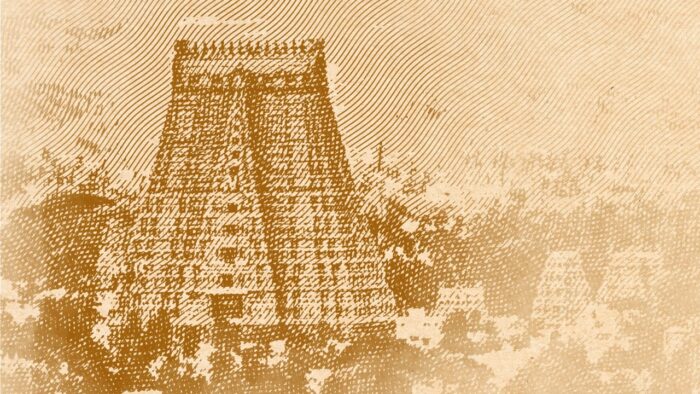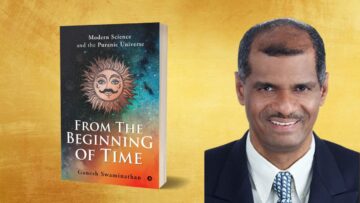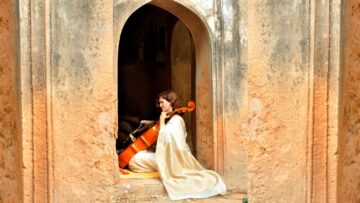Sri Parasara Badri Bhattar swamy has said in a discourse that Srirangam is praised by the Vedas, Azhwars and Acharyas (Maraiyaya Naal Vedathin marai Porul). Lord Ranganatha is called Veda Swarupi. And so it was decided to hold the conference on Vaishnavism on this sacred site, surrounded by the flowing Cauvery.
The conference on Vaishnavism was an enriching platform for scholars to explore the multifaceted influence of Vaishnavism on Indian culture. Covering a wide array of topics ranging from scriptures and philosophical thought to art, architecture, and rituals, the conference aims to delve deep into the essence of Vaishnavism and its impact on various aspects of Indian society and culture.
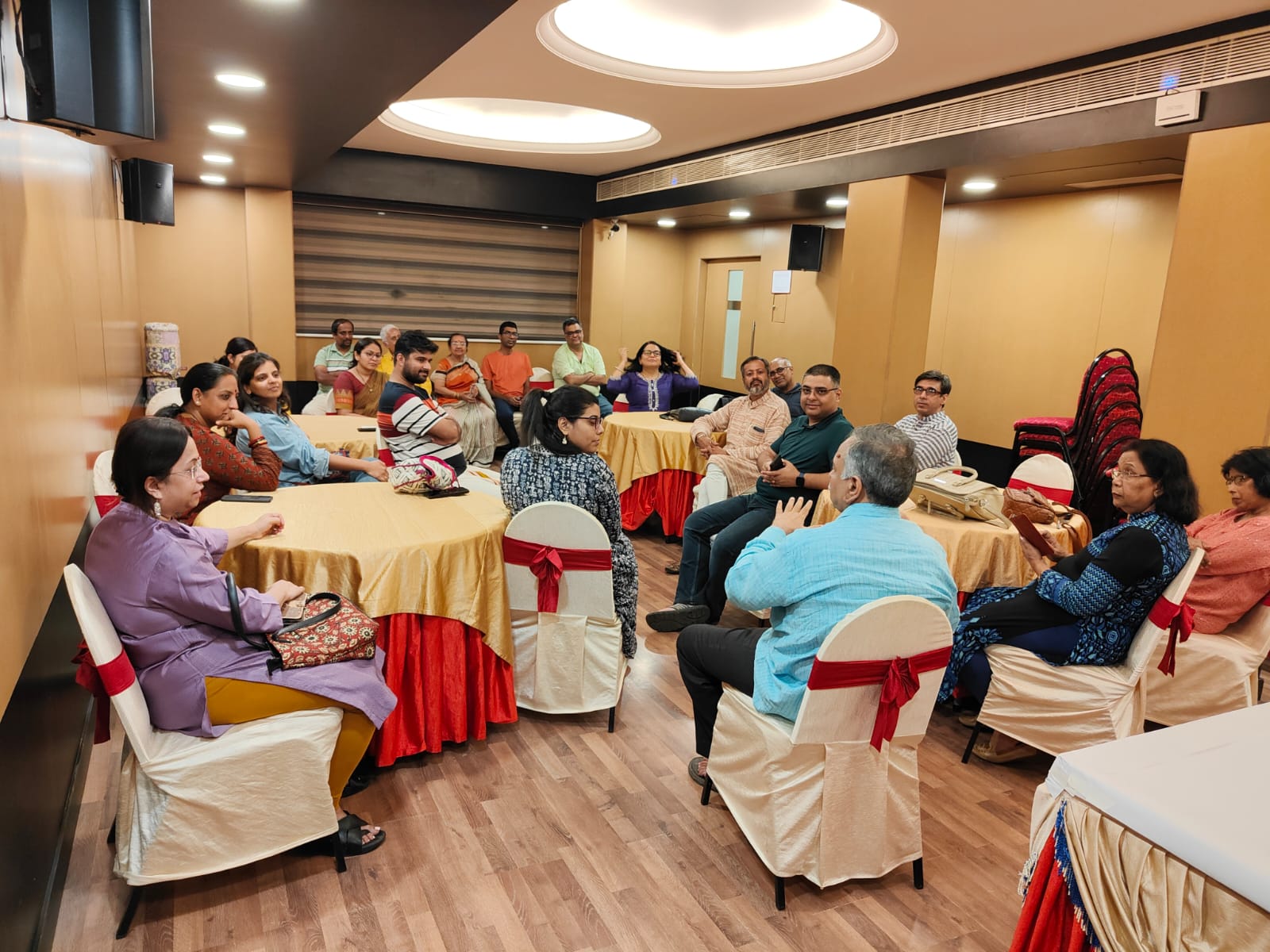
The venue – Srirangam, known for its iconic Sri Ranganathaswamy temple, added a special significance to the event. Srirangam, steeped in Vaishnavite tradition and history, provides an ideal backdrop for scholars to immerse themselves in the essence of Vaishnavism. Participants had the opportunity to explore firsthand the rich cultural heritage and architectural marvels associated with Vaishnavism, thus enhancing their understanding of this ancient tradition.
In her paper, M C Vaijayanti discusses the unique preservation of historical events, specifically the invasion of Srirangam in the 14th century CE, through religious literature such as stotras and mahakavyas. Despite abundant epigraphic records documenting the glory and endowments of Srirangam, few records exist of the Muhammadan invasion and its impact on the sacred shrine of Vishnu for over five decades. The paper questions whether relegating these religious texts as not real history has caused them to fade from the collective memory of devotees, particularly due to a lack of Sanskrit education among the masses.
The stotra “Abhitistava,” comprising 29 shlokas, serves as an emotional plea from devotees to Sriranganatha for protection during times of crisis. Similarly, the mahakavya “Madhuravijayam” by Ganga Devi portrays the bravery of General Kumara Kampana in restoring the temple after the invasion. Vedanta Desika’s accounts further highlight the bravery and eventual celebration surrounding the temple’s restoration.
The paper aims to tell the story of Vedanta Desika’s prayers and Kumara Kampana’s restoration efforts as recorded in “Maduravijayam,” emphasizing the power of literature to preserve historical events and truths. Drawing parallels with Salman Rushdie’s statement that “fictions could be as powerful as histories,” the paper asserts the potency of literature as carriers of memory and truth, albeit with poetic liberties. Ultimately, it seeks to reaffirm the significance of religious literature in preserving and transmitting historical events and truths to future generations.
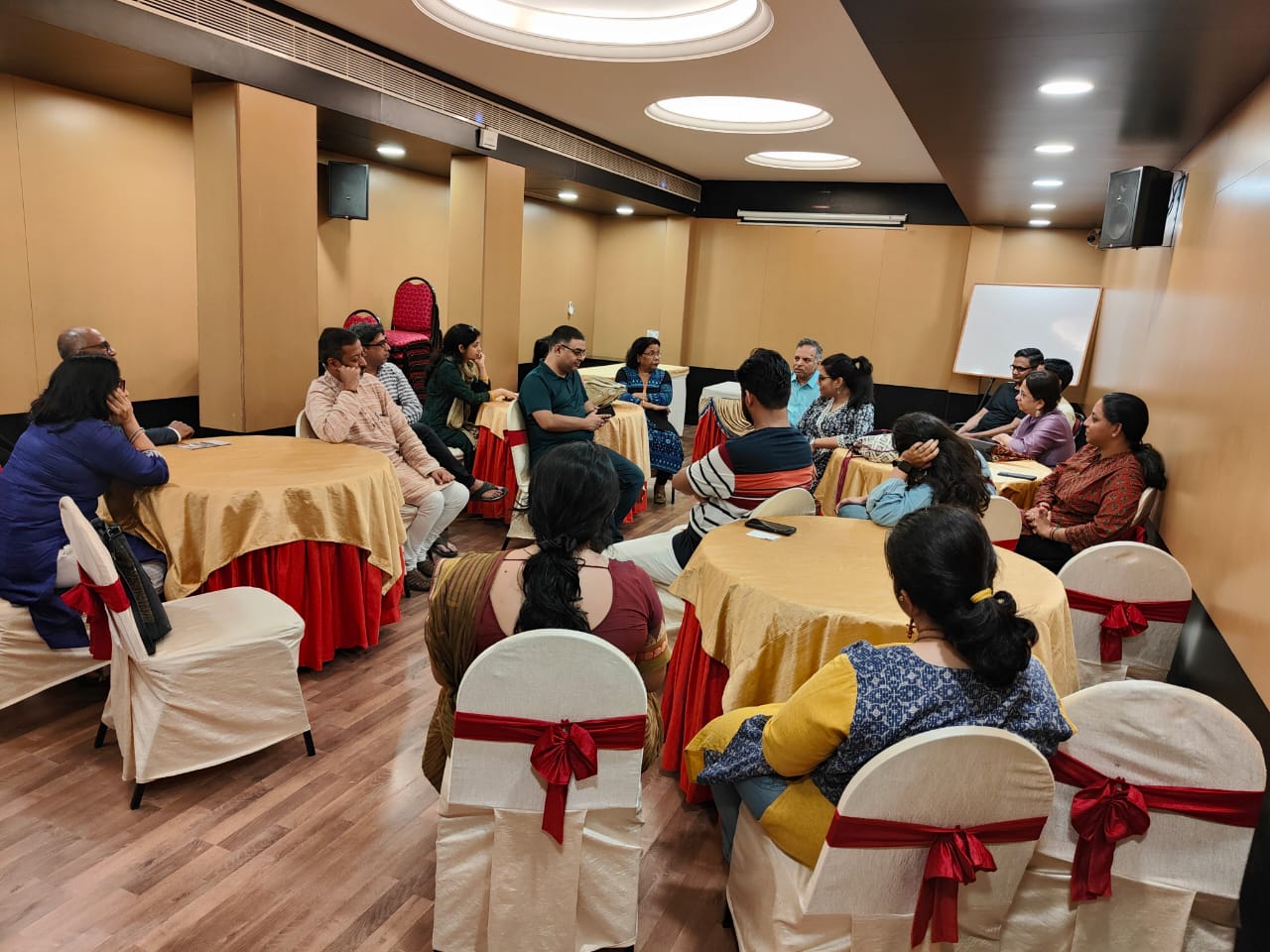
Indica’s emphasis on incorporating textual, embodied, and experiential knowledge reflects a holistic approach towards learning and understanding Indian knowledge traditions. By encouraging scholars to explore Vaishnavism through multiple dimensions, the conference aimed to facilitate a deeper appreciation and internalization of its teachings, leading to inner transformation and personal growth.
With a diverse range of topics discussed against the vibrant cultural milieu of Srirangam as the backdrop, the conference on Vaishnavism was a stimulating and enlightening experience for all participants. The conference was curated by Dr Nagaraj Paturi, Director IKS, Indica.
Shri Varada Sambhus provided an overview of the Varkari Sampradaya, a prominent Vaishnavite Bhakti movement in Maharashtra, focusing on its philosophy, practices, and societal impact. It highlights the central role of devotion to Viththala or Panduranga, considered a form of Krishna, and emphasizes the tradition’s accessibility and democratization of spiritual knowledge. The paper explores the contributions of influential figures like Dnyaneshvara and Tukarama, who promoted Prakrit compositions and nama-japa, making spirituality accessible to all, including marginalized groups.
Dr. S. Ramaratnam, Vice Chancellor of Jagadguru Kripalu University, Orissa, provided a contemporary perspective on Gaudiya Vaishnavism, focusing on the teachings of Jagadguru Kripaluji Maharaj. He discusses the categorization of Vaishnava Bhakti Philosophy and highlighted the Gaudiya tradition’s emphasis on devotion to both Krishna and Radha. Maharajji’s compositions, reflecting practical philosophy and devotion to Radha, are explored, along with his philosophical stance on Māyā. The paper promises an in-depth discussion on various philosophical aspects, including the guru-disciple relationship, the nature of the soul, yogamaya, karma, yoga, and bhakti. Additionally, it covers themes such as the qualities of a true devotee and Vaishnava ethics. Accompanied by an extensive list of abbreviations and a bibliography, the paper offers a scholarly exploration of Gaudiya Vaishnavism in the 21st century.
The paper authored by Maitri Goswami delves into the notion of devotion within the Vallabh Sampraday, founded by Mahaprabhu Shri Vallabhachary. It underscores the significance of Bhakti (devotion) as paramount, surpassing knowledge and action, and emphasizes unwavering devotion to Krishna as the sole path to spiritual attainment. Vallabhacharya’s contribution lies in formulating this concept into a doctrine of deliverance, termed Pushtimarg, which is rooted in the Upanishadic doctrine of selection (Varana).
The paper elucidates Pushti as synonymous with God’s grace or mercy, showered upon souls chosen by divine will. It explores Vallabhachary’s theory of devotion, which underscores the instrumental role of grace in realizing Krishna’s form and participating in his divine play. The author examines the amalgamation and differentiation of Vallabhite approaches towards worship, faith, ritualistic adoration, repetition of Bhagwan’s name, and independent devotion, all empowered by grace.
Ultimately, the paper positions the Vallabhite concept of Pushti-Bhakti as a subtype within major Vaishnavite schools, emphasizing its unique emphasis on devotion infused with divine grace.
The paper authored by Dr. B. C. Anish Krishnan Nayar delves into the enduring legacy of the Pancharatra system within Madhva Vaishnavism. It traces the historical and philosophical significance of Pancharatra, highlighting its defense against criticisms from other philosophical systems and its integration into the core tenets of various Vaishnavite traditions. The author emphasizes Madhvacharya’s unique contribution in openly endorsing Pancharatra texts as valid sources of knowledge within the Vedantic inquiry, unlike other scholars who merely accommodated Pancharatra within their frameworks. The paper also examines the pan-Indian presence of Pancharatra, its prevalence in Tamil Nadu, and its influence on Tatvavada, a philosophy closely associated with Madhva Vaishnavism. Lastly, it addresses contemporary discussions regarding the untraceable Pancharatra sources of Madhvacharya, reaffirming the enduring relevance of Pancharatra within the Madhva Vaishnavism tradition.
In his paper, Arvind V Iyer explores the veneration of Viṣṇu in Bhāsa’s plays through the examination of the opening benedictory verses. He notes that out of thirteen plays attributed to Bhāsa, twelve include these verses dedicated to Viṣṇu or Viṣṇu’s avatāra-s. Despite potential later additions, these verses offer insights into Viṣṇu’s worship in Sanskrit theater. Iyer’s analysis, based on criteria like thematic relevance, continuity with ancient texts, and later devotional literature, uncovers the intersection of epic traditions and devotional practices in Sanskrit drama, emphasizing Viṣṇu’s significance on the theatrical stage.
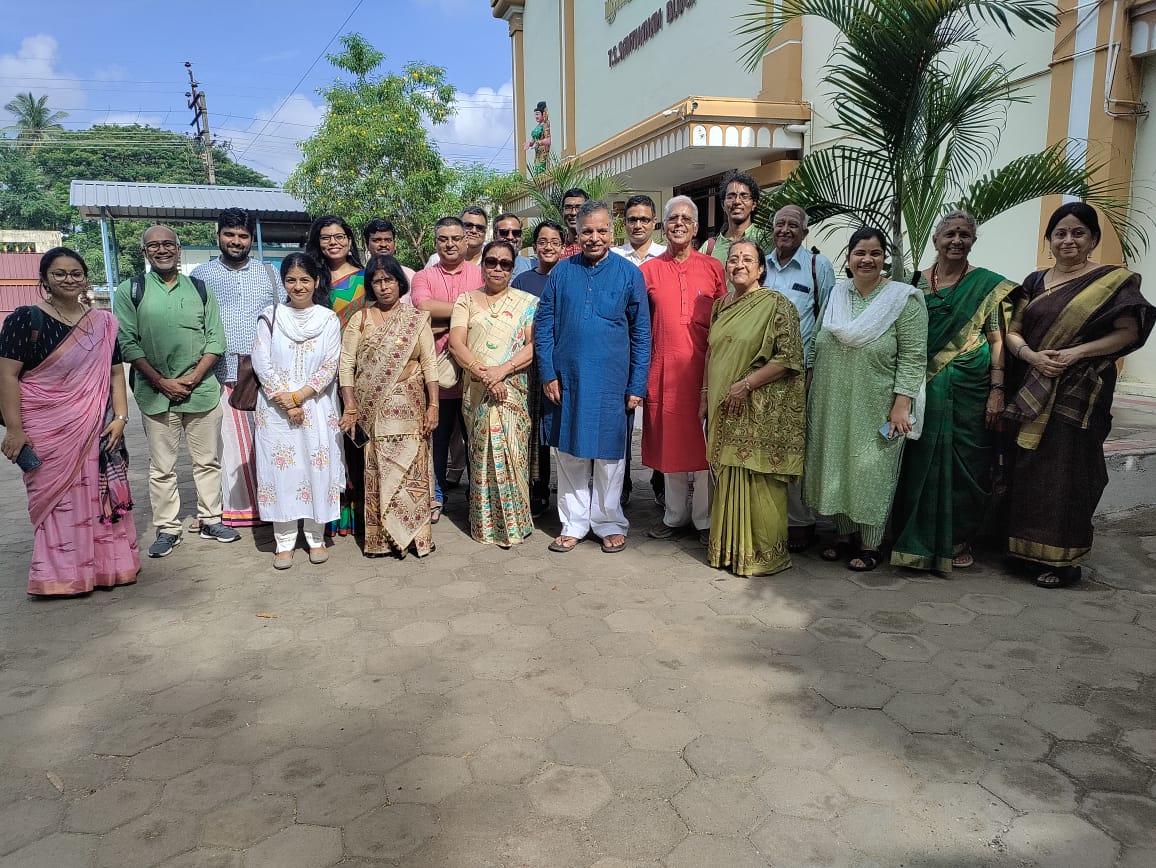
Hitangi Brahmbhatt’s paper examines the concept of samarpan (surrender) as expressed in selected verses and paintings of Sursagar, a compilation of poems attributed to the poet Surdas. Samarpan, or dedicating oneself to the worship of the almighty, holds significance in the Pushtimarg sect, where initiation through the Brahmasabandh diksha ritual deepens its meaning.
While Surdas is associated with the Pushtimarg sect, there is confusion regarding the attribution of Sursagar manuscripts to the “real/original Surdas.” Brahmbhatt aims to demonstrate various forms of samarpan expressed in illustrated manuscripts of Sursagar from the Mewar court of Rajasthan. Surdas intricately weaves this aspect of samarpan, uncovering different forms of devotion experienced by various individuals.
The paper also explores the distinct experiences of samarpan expressed by devotees and lovers in Bhakti poetry, drawing parallels between the union of lovers and the union of the devotee with the almighty. Brahmbhatt suggests that analyzing samarpan textually and visually may reveal its alignment with the core beliefs of the Pushtimarg sect.
Dr. Siri Rama’s paper delves into the multifaceted aspects of Vishnu’s dance within Vaishnava traditions as depicted in various forms such as classical/folk dance, puranas, art, thought, and literature. The focus is on exploring Vishnu’s role in the origin of dance, particularly through the concept of vrittis (styles of presentation) as described in the Natyashastra.
While the Natyashastra predominantly credits Shiva with the origin of dance, later commentators, influenced by Krishna and Vishnu, attribute the creation of dance to Vishnu. The Nartananirnaya, a sixteenth-century text, depicts Vishnu creating dance through the mere movement of his eyebrows, making the shakti and danseuse Maya dance. Vishnu’s various incarnations are also seen as manifestations of Maya or Leela (play).
In Vaishnava classical dance traditions, compositions such as patrakirtana, namasankirtana, and nayika-based pieces are performed ritually and in performances. These traditions highlight Vishnu’s role as a nata (actor) and emphasize his sportive acts (lila). The paper aims to explore and shed light on these aspects of Vaishnava dance traditions, showcasing the significance of Vishnu’s dance in religious and artistic contexts.
Dr. Dhurjjati Sarma’s paper explores the visual aesthetics of Vaishnava literary and devotional culture in Assam during the fifteenth to eighteenth centuries. It focuses on the emergence of neo-Vaishnavism in Assam led by saints Sankardeva and Madhavdeva, who created a rich corpus of devotional literature including songs, plays, and translations of the Bhagavata Purana. The paper analyzes an illustrated Assamese manuscript of the Chitra Bhagavata, examining its visual poetics and its role in the missionary nature of the neo-Vaishnavite movement. It also explores the oral and performative elements of precolonial Vaishnava literary culture and its interaction with the Ahom royal culture, highlighting a network of cultural exchange and negotiation.
Janardhan Ghosh’s paper examines Śrī Caitanya’s significant contribution to Bengali theatre, particularly within the context of Gauḍīya Vaiṣṇavism. It highlights how Caitanya revolutionized the traditional form of Kīrtan into Nagarkīrtan, incorporating music, dance, and devotion. By arranging and participating in various theatrical performances himself, Caitanya played a pivotal role in integrating Dhārmic practice with theatre. The paper draws from texts like Śrī Caitanya Bhāgavat and Caitanyacaritāmṛta to illustrate Caitanya’s influence on Bengal’s theatrical landscape, which later led to the revival of folk forms like Jātrā. Additionally, it discusses the historical roots of Bengali theatre and its indigenous forms, offering insights into dramaturgy, space, audience, acting, and actors, with a specific focus on Caitanya’s transformative impact.
The paper by Nidhi Mishra delves into the tradition of Haveli Sangeet within Pushtimargiya Vaishnava temples, highlighting its role in fostering devotion to Lord Krishna. It traces the origins of this tradition back to Vallabhacharya ji and the significant contributions of the AshtaChhap Poets. Despite enduring persecution during Aurangzeb’s rule, Haveli Sangeet endured and relocated to Havelis in Rajasthan and Gujarat for safety. The paper aims to shed light on the evolution and current status of this tradition, utilizing interviews with experts to provide firsthand insights. Additionally, it aims to underscore the challenges faced in preserving this cultural heritage over time.
Nritya Jagannathan’s paper explores Śrī T Krishnamacharya’s unique perspective on Yogasūtra 1.23, focusing on his interpretation of Īśvarapraṇidhāna as the central pathway to viveka and kaivalya. Krishnamacharya, a master in all the Darśana-s, particularly Viśiṣṭādvaita-vedānta, composed various works on Yoga, including the Yogavallī. He emphasizes the significance of Īśvarapraṇidhāna and envisions Īśvara not just as a singular entity but as Īśvara-Īśvari (Lakṣmī-Nārāyaṇa).
In his commentary, Krishnamacharya explains that cittavr̥tti nirodha is the outcome of īśvara-anugraha, and dhyānabala is essential for attaining and sustaining this state. He advocates saguṇā dhyānam with Īśvara as the sole dhyeyam and emphasizes finding one’s own cultural reference for invoking deep inner feelings.
Krishnamacharya’s perspective synthesizes bhakti, vedānta, and yoga seamlessly, with his interpretation of Yogam connecting to vāyu, Nārāyaṇa, Mahālakṣmī, and Garuḍa as guru tattva. The paper delves into his interpretation of Yogasūtra in the context of Viśiṣtādvaita philosophy and his development of saguṇā dhyānam with Śrīmannārāyaṇa as the dhyeyam. It also explores the connection between ekatattva-abhyāsa and iśvarapraṇidhāna, with specific references to Krishnamacharya’s commentaries and other works.
Thus the conference connects Vaishnavism to all aspects of our knowledge systems, bhakti, Vedanta, Yoga, art and literature. And how it has transformed all of these in turn.
Please watch the conference videos at https://www.youtube.com/playlist?list=PLplXz64H2WtH6pO4zDrAOax0FIhHFAFNi



